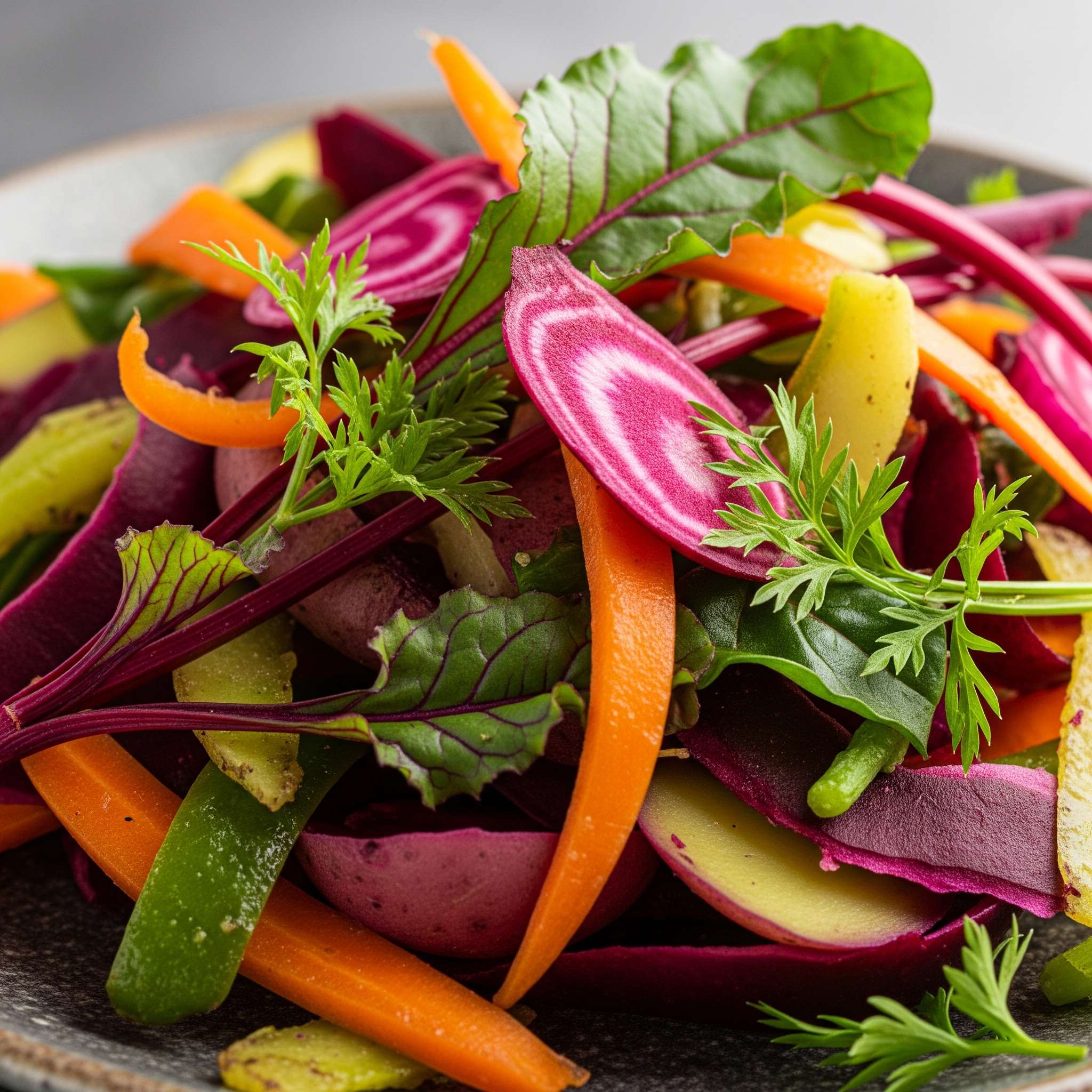Culinary Upcycling: From Root to Stem, A Sustainable Kitchen Revolution

In an age of heightened environmental awareness, a powerful culinary movement is gaining momentum: culinary upcycling, often embodied by the practice of root-to-stem cooking. This isn’t just about reducing food waste; it’s about reimagining ingredients, unlocking hidden flavors, and embracing a more sustainable approach to cooking. From broccoli stems to carrot tops, much of what we typically discard holds incredible culinary potential. By embracing root-to-stem, we transform overlooked scraps into delicious, resourceful dishes, benefiting both our palates and the planet.
The Problem of Food Waste: A Global Challenge
Food waste is a monumental global issue. Millions of tons of edible food are discarded annually, contributing to greenhouse gas emissions and squandering precious resources like water and land. Much of this waste occurs at the consumer level, often due to unfamiliarity with how to use less common parts of fruits and vegetables. This is where root-to-stem cooking offers a powerful solution. By utilizing the entire edible plant, we drastically reduce our personal food footprint, turning potential waste into valuable ingredients.
Beyond the Peel: Unlocking Hidden Flavors
Root-to-stem cooking is more than just an ethical choice; it’s a culinary adventure. Many often-discarded parts of plants boast unique flavors and textures that can elevate a dish.
- Broccoli Stems: Often discarded, these are surprisingly tender and sweet when peeled and sliced, perfect for stir-fries, slaws, or even roasted.
- Carrot Tops: The leafy greens of carrots, usually composted, have a delicate, slightly bitter, and herbaceous flavor akin to parsley, making them ideal for pestos, chimichurris, or garnishes.
- Cauliflower Leaves: When roasted, these outer leaves become wonderfully crispy and flavorful, a delicious alternative to kale chips.
- Swiss Chard Stems: While the leaves are common, the colorful stems can be chopped and sautéed like celery or asparagus, adding crunch and color to dishes.
- Citrus Peels: Far from waste, citrus peels are packed with aromatic oils. Zest can infuse flavor into desserts, marinades, or cocktails, and candied peels are a delightful treat.
By exploring these overlooked components, home cooks can discover new dimensions of flavor and add exciting versatility to their meals.
The Benefits of Root-to-Stem: A Win-Win Approach
Embracing culinary upcycling offers a multitude of advantages:
- Waste Reduction: Directly tackles food waste at the household level, contributing to a more sustainable lifestyle.
- Cost Savings: Maximizing every part of an ingredient means buying less and getting more value from your produce.
- Flavor Innovation: Encourages creativity in the kitchen and leads to the discovery of unique tastes and textures.
- Nutrient Retention: Many peels and stems are rich in fiber, vitamins, and minerals that we might otherwise miss out on.
- Environmental Impact: Less waste means less demand on landfills and reduced energy consumption for food production and disposal.
Root-to-stem cooking is a simple yet impactful way for individuals to make a tangible difference, transforming kitchen waste into culinary triumphs.
Easy Culinary Upcycling: Carrot Top Pesto Hack
This recipe transforms often-discarded carrot greens into a vibrant, flavorful pesto, perfect for pasta, sandwiches, or as a dip.
Prep Time: 10 minutes
Cook Time: 0 minutes
Yields: Approx. 1 cup
Ingredients
- 1 cup (packed) fresh carrot tops, washed and thoroughly dried (stems removed)
- 1/4 cup toasted walnuts or almonds (pine nuts work too)
- 1/4 cup grated Parmesan cheese (or nutritional yeast for dairy-free)
- 1-2 cloves garlic, peeled
- 1/2 teaspoon salt (or to taste)
- 1/4 teaspoon black pepper
- 1/2 cup extra virgin olive oil (or more, as needed for desired consistency)
- 1-2 tablespoons fresh lemon juice (to brighten flavor)
Equipment
- Food processor or blender
- Rubber spatula
Instructions
Step-by-Step Preparation
- Prepare Carrot Tops: Carefully remove the leafy greens from the carrot stems. Wash them thoroughly under cold water and pat them completely dry with a paper towel or use a salad spinner. Any excess moisture can make the pesto watery.
- Combine Ingredients: In the bowl of a food processor, combine the dried carrot tops, toasted nuts, grated Parmesan cheese, garlic cloves, salt, and black pepper.
- Process: Pulse the mixture a few times until roughly chopped.
- Add Olive Oil: With the food processor running on low, slowly drizzle in the extra virgin olive oil until the pesto reaches your desired consistency. You may need a little more or less oil depending on how thick you like it.
- Finish with Lemon Juice: Add the fresh lemon juice and pulse a few more times to incorporate. Taste and adjust seasonings (salt, pepper, lemon juice) as needed.
- Serve or Store: Use immediately with pasta, spread on toast, as a sandwich spread, or as a dip.
Tips for Success
- Use Fresh Carrot Tops: The fresher the carrot tops, the better the flavor. Avoid any that look yellowed or wilted.
- Toast Nuts: Toasting the nuts before adding them to the pesto significantly enhances their flavor and aroma.
- Adjust Consistency: For a thinner pesto, add a little more olive oil. For a thicker pesto, use slightly less.
- Storage: Store leftover carrot top pesto in an airtight container in the refrigerator for up to 5-7 days. Pour a thin layer of olive oil over the top before sealing to help prevent browning. You can also freeze pesto in ice cube trays for longer storage.
- Creativity: Feel free to experiment with other root-to-stem ingredients in your cooking! Think roasted potato peels, quick pickles from cucumber ends, or broths made from vegetable scraps.
